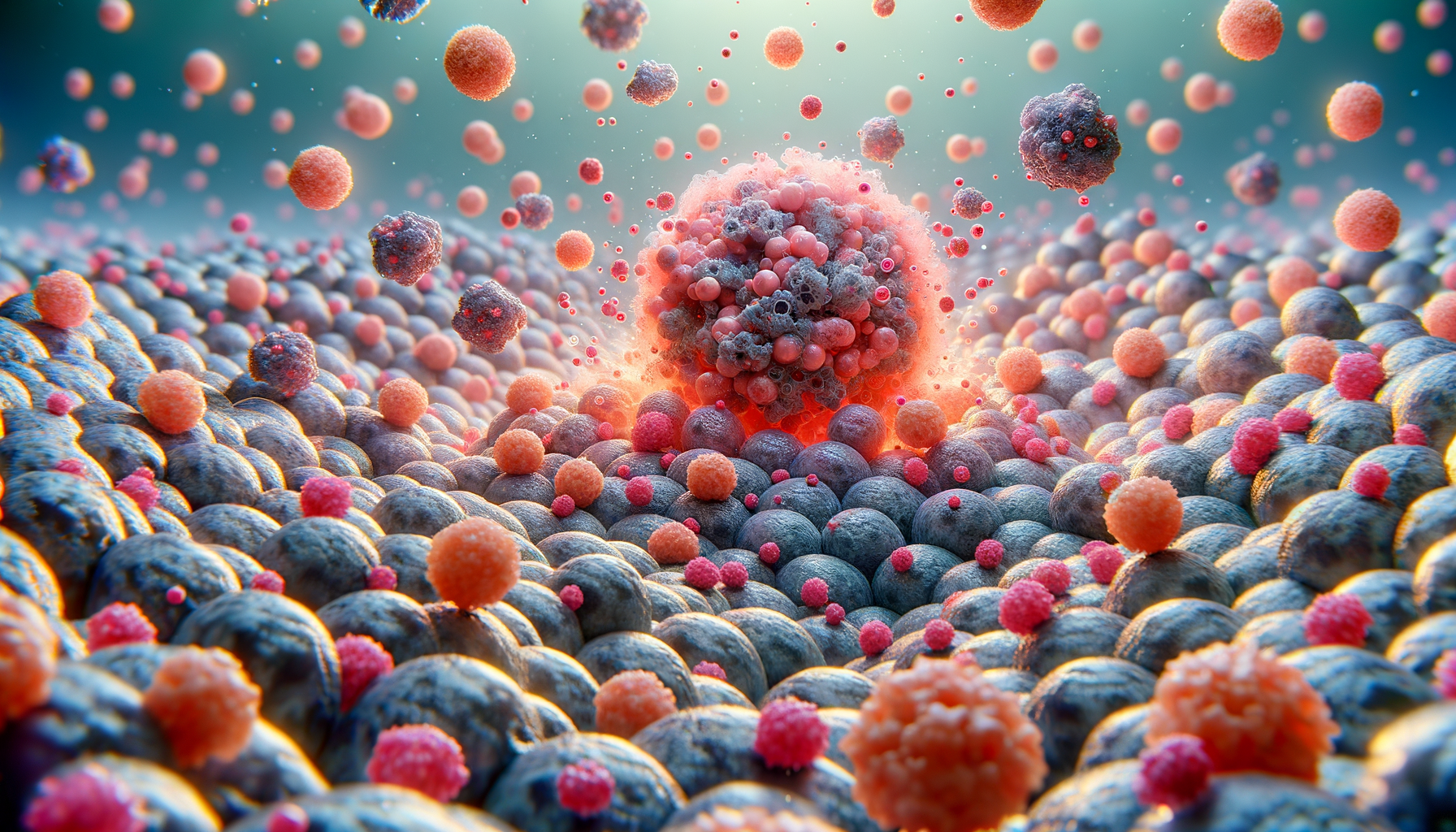Introduction to Cellular Cancer Research
Cellular cancer research is a rapidly evolving field that delves into the complexities of how cancer cells form, grow, and spread within the human body. This area of study is pivotal in the fight against cancer, as it provides the foundation for developing new therapies and improving existing treatments. The importance of understanding the cellular mechanisms of cancer cannot be overstated, as it directly impacts the effectiveness of interventions and the survival rates of patients worldwide. With cancer being a leading cause of death globally, research efforts are continually focused on unraveling the mysteries of cancer cell behavior and finding innovative ways to combat this disease.
The Formation of Cancer Cells
Cancer cells originate from normal cells that undergo genetic mutations. These mutations can be triggered by various factors, including environmental influences, lifestyle choices, and genetic predispositions. When these mutations occur, they can disrupt the normal regulatory mechanisms of cell growth and division, leading to uncontrolled proliferation of cells. This process is known as carcinogenesis.
At the molecular level, carcinogenesis involves several key stages:
- Initiation: This is the first step where genetic alterations occur, often in response to carcinogens such as tobacco smoke or UV radiation.
- Promotion: During this stage, the initiated cells are stimulated to divide and grow, forming a mass of cells known as a tumor.
- Progression: This final stage involves further genetic changes that enhance the tumor’s ability to grow and invade surrounding tissues.
Understanding these stages is crucial for developing preventive strategies and early detection methods. By identifying the specific mutations and pathways involved in cancer cell formation, researchers can design targeted therapies that disrupt these processes and halt the progression of the disease.
Mechanisms of Cancer Cell Spread
Once a tumor has formed, cancer cells can spread to other parts of the body through a process called metastasis. This is a complex and multi-step process that involves several key mechanisms:
- Invasion: Cancer cells invade surrounding tissues by breaking down the extracellular matrix, a network of proteins that provides structural support to cells.
- Intravasation: The cancer cells enter the bloodstream or lymphatic system, allowing them to travel to distant sites in the body.
- Circulation: While in circulation, cancer cells must survive the immune system’s defenses and the physical stresses of traveling through the bloodstream.
- Extravasation: The cancer cells exit the bloodstream and invade new tissues, where they can form secondary tumors.
Metastasis is responsible for the majority of cancer-related deaths, making it a critical focus of research. By studying the molecular mechanisms that enable cancer cells to spread, scientists aim to develop therapies that can prevent or limit metastasis, thereby improving patient survival rates.
Advancements in Cellular Cancer Research
Recent advancements in cellular cancer research have led to significant breakthroughs in our understanding of cancer biology and the development of new treatment strategies. One of the most promising areas of research is the use of targeted therapies, which are designed to specifically attack cancer cells without harming normal cells. These therapies often involve the use of monoclonal antibodies or small molecules that inhibit specific proteins or pathways involved in cancer cell growth and survival.
Another exciting development is the use of immunotherapy, which harnesses the body’s immune system to fight cancer. This approach has shown remarkable success in treating certain types of cancer, such as melanoma and lung cancer, and continues to be a major area of research focus.
Additionally, advancements in genetic and molecular profiling have enabled researchers to identify specific biomarkers associated with different types of cancer. These biomarkers can be used to develop personalized treatment plans that are tailored to the unique genetic makeup of an individual’s cancer, improving the effectiveness of therapies and reducing side effects.
Challenges and Future Directions
Despite the significant progress made in cellular cancer research, several challenges remain. One of the primary challenges is the heterogeneity of cancer cells, which means that tumors can consist of a diverse population of cells with varying genetic mutations and characteristics. This diversity can make it difficult to develop treatments that are effective against all cancer cells within a tumor.
Another challenge is the development of resistance to therapies. Cancer cells can evolve and adapt to treatment, rendering certain therapies ineffective over time. Researchers are working to understand the mechanisms of resistance and develop strategies to overcome it, such as combination therapies that target multiple pathways simultaneously.
Looking forward, the future of cellular cancer research lies in the continued integration of cutting-edge technologies, such as CRISPR gene editing and artificial intelligence, to accelerate the discovery of new therapeutic targets and improve patient outcomes. Collaborative efforts between researchers, clinicians, and patients will be essential in driving the next wave of innovations in cancer treatment and ultimately, finding a cure for this devastating disease.




Leave a Reply